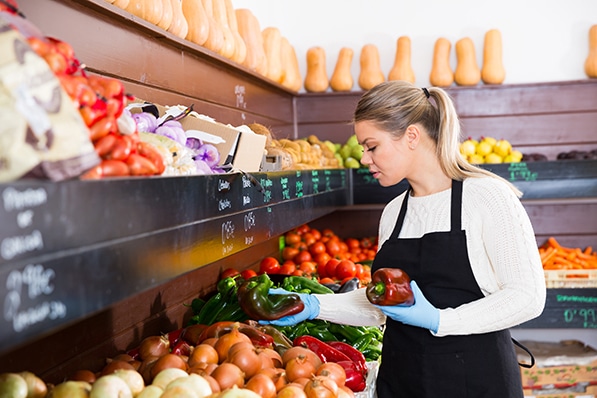
On April 16, Governor Gavin Newsom signed Executive Order N-51-20, creating a COVID-19 Supplemental Paid Sick Leave that requires employers, who are covered by Industrial Welfare Commission Wage Orders 3, 8, 13 and 14, Health & Safety Code section 113789 and have 500 or more employees, to provide up to two weeks (80 hours) of supplemental paid sick leave to food sector workers unable to work due to COVID-19.
Updated 4/20/2020: The California Department of Industrial Relations has published frequently asked questions on Supplemental Paid Sick Leave for Food Sector Workers.
The COVID-19 Supplemental Paid Sick Leave is limited in scope and applies only to food sector workers (such as farmworkers, agricultural workers and those working in grocery stores and fast food chains), and delivery network companies/drivers.
Workers covered under the order are entitled to take supplemental sick leave if they’re unable to work because they are:
- Subject to a federal, state or local quarantine or isolation order related to COVID-19;
- Advised by a health care provider to self-quarantine or self-isolate due to concerns related to COVID-19; or
- Prohibited from working by the “Food Sector Worker’s Hiring Entity” due to health concerns related to the potential transmission of COVID-19.
The total amount of supplemental sick leave time a qualified employee may take depends upon the number of hours that individual normally works. A worker considered “full-time” — or who worked or was scheduled to work on average at least 40 hours per week in the two weeks preceding the date supplemental leave was taken — is entitled to the maximum of 80 hours of COVID-19 Supplemental Paid Sick Leave. Food sector employees not considered full-time or who work less than 40 hours per week are entitled to leave equal to the total hours they’re normally scheduled to work over two weeks. The order also provides for a method of calculating leave for a food sector worker on a variable-hour work schedule.
The leave must be made available upon the qualified food sector worker’s oral or written request and be paid out at a rate equal to the highest of either the:
- Worker’s regular rate of pay for the last pay period;
- State minimum wage; or
- Local minimum wage.
Pay may not exceed $511 per day and $5,110 in total.
The COVID-19 Supplemental Paid Sick Leave is in addition to paid sick leave already required under California’s Health Families Healthy Workplace sick leave law, and it will be enforced in the same manner.
The order also includes a new notice requirement: The Labor Commissioner shall make publicly available a model notice by April 23, 2020, and this notice must be posted in a conspicuous location. However, if the employer has food sector workers who don’t frequent the workplace, the notice may be distributed by electronic means, such as via e-mail.
Finally, the order also establishes a hand-washing standard; employees working in any food facility can wash their hands every 30 minutes and more, as needed. This standard is enforced under provisions of the Retail Food Code.
At the federal level, the Families First Coronavirus Response Act (FFCRA) went into effect on April 2, 2020, granting emergency paid sick leave benefits to employees unable to work due to COVID-19 qualifying events. Because the FFCRA was limited to employees who work for an employer with fewer than 500 employees, California’s COVID-19 Supplemental Paid Sick Leave is intended to fill the gap by providing food sector employees working for such employers with additional COVID-19 related sick leave benefits.
Erika Frank, Executive Vice President of Legal Affairs and General Counsel
Visit the CalChamber Coronavirus (COVID-19) webpage for more COVID-19-related federal, state and local resources, including CalChamber coverage.
Access additional COVID-19-related HRWatchdog blogs.




